On the front line: how Jake Hanrahan changed the face of modern war reporting
As the founder and face of news outlet Popular Front, Jake Hanrahan is bringing unfiltered world events to the masses through a social media platform that he believes is challenging established and antiquated media brands. Miles Ellingham joined Hanrahan and his team at the Paris riots to see him at work
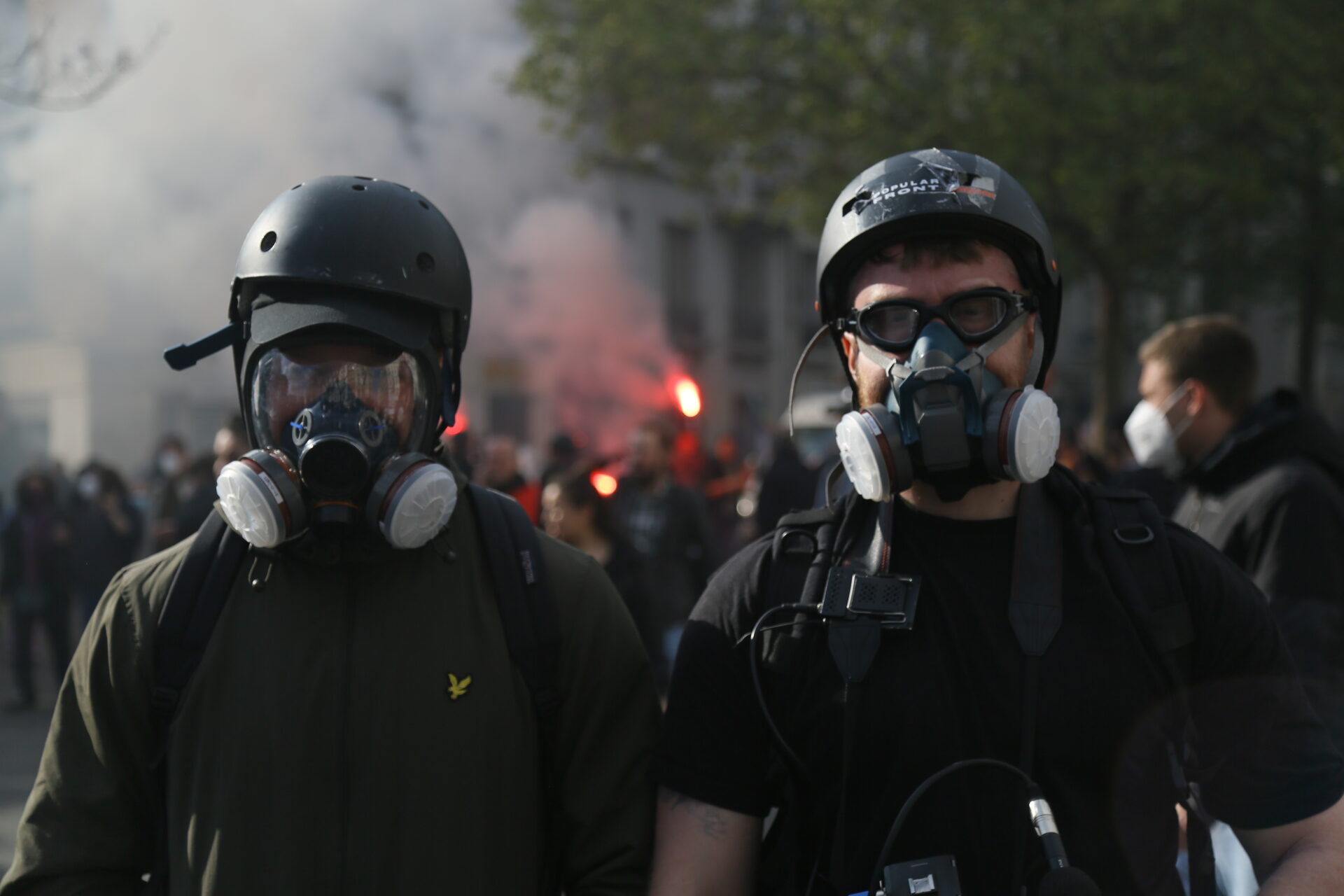
Jake Hanrahan is practising muay thai in the corridor between two carriages on the Eurostar. We’re en route to Paris where the journalist and frontman of alternative news site Popular Front will be covering the May Day protests. An embattled French people are gearing up to show Macron what they think of his pension reforms. Over the past couple of months, the French police have laid into protesters at these demonstrations. More than 300 people have been left injured, including two in a coma, while others have lost eyes and thumbs. I’m apprehensive. Hanrahan, however, is used to this kind of thing. He almost seems excited.
I hadn’t heard of Jake Hanrahan, or his work, until a friend of mine — someone who spends much of their time at free parties and doesn’t typically keep abreast of world affairs — suddenly began quizzing me on the geopolitical complexities of the second Nagorno-Karabakh War. “Where did you hear about that?!” I said, taken aback. “Popular Front”, he replied, matter-of-factly.
Popular Front, founded by Hanrahan in 2018, is a grassroots media platform covering world conflict. It has a large, dedicated following. The documentaries on its YouTube channel amass millions of views, while its Instagram account, despite being restricted by META for ‘breaching recommendations guidelines’ (despite multiple inquiries, Hanrahan does not know why), still manages close to half a million followers. There’s also a Popular Front podcast, a semi-regular zine, and a Discord server complete with its own lively online community.
The name started as PFLCJ (Popular Front for the Liberation of Conflict Journalism), “i.e., liberating it from the old gatekeeper, stiff-broom-up-the-arse type people,” Hanrahan once explained to me, “but then I thought, actually, Popular Front works.”
Travelling on a shoestring, Popular Front has covered events all over the world, from the failed revolution in Belarus to Russia’s anti-Putin underground and the Hong Kong protests. There’s a broad appeal to its coverage, galvanised by its punky, DIY approach to news reporting. Whereas traditional media outlets will release straight-faced, rigorously impartial reports from conflict areas, there’s a giddy, unrestrained element to a Popular Front documentary, one that turns to the viewer and excitedly asks, “Are you seeing this!?”
Over the past two decades, the media landscape has changed significantly. Often attributed to the advent of the internet, the monopoly held by news conglomerates that wield vast wealth and resources is starting to wane. Central to that shift is journalism becoming less by the book as its sacred codes are opened up to interpretation. Hanrahan, for instance, is suspicious of objectivity as an idealised journalistic credo.
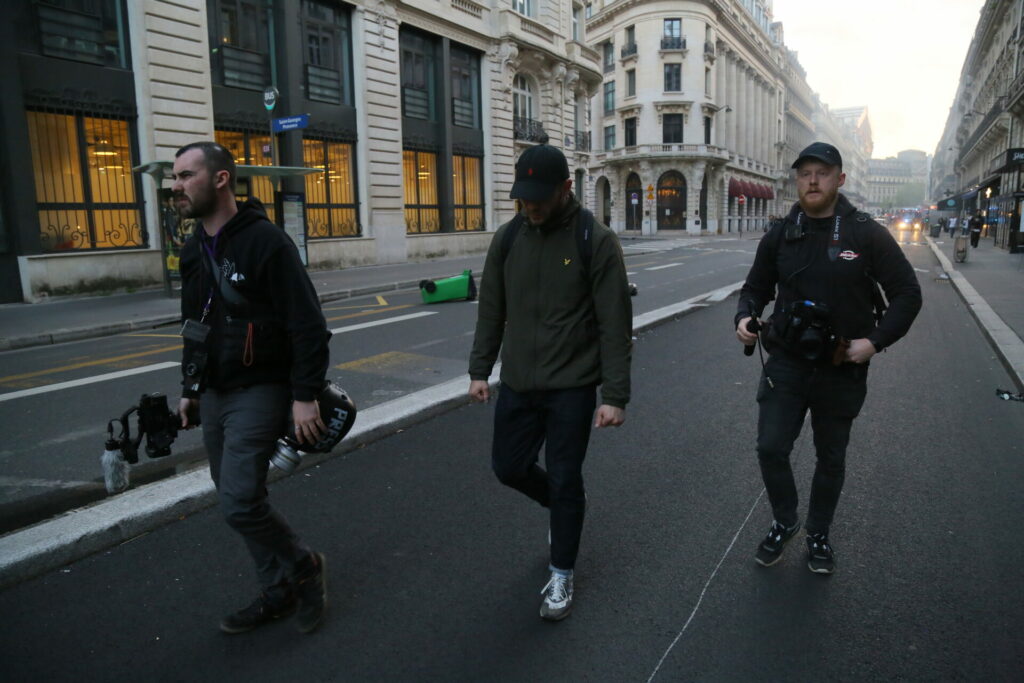
“Total objectivity”, he once told me, “would be quite dangerous really because it’s a bit psychopathic… I just don’t think it’s natural and that’s why a lot of people have lost faith in reportage, because it has this weird, robotic way of going through the motions… Total impartiality presents a black and white feel to a situation which isn’t reality,” he stated.
That being said, Popular Front approaches stories in ways you won’t see on mainstream news sources. Take their video on Mexico’s Sinaloa Cartel — considered the world’s largest drug-trafficking organisation —which has now hit two million views on YouTube. Comprised of found footage from a cartel footsoldier hiding out in the rainforest, besieged by flesh-eating bugs, the documentary shows the quotidian grimness of life on the frontlines of the drug war. The video is a testament to the level of access Popular Front has obtained and was so successful with their Mexican audience that it spawned an offshoot Instagram account, Popular Front Mexico, which is managed by an associate in Tijuana.
The platform retains something of a cult following but has also attracted wider celebrity attention. A producer claiming to work with American filmmaker Darren Aronofsky reached out to Popular Front in 2021 looking to collaborate. British pop star turned actress Lily Allen has posted about Popular Front, and last year, one of the platform’s Ukraine updates found its way onto Kim Kardashian’s Insta Stories and was beamed to her 280 million-plus followers. Last year, Complex magazine called Hanrahan “one of the most important voices in war and conflict reporting”.
Needless to say, the operation has surpassed expectations.
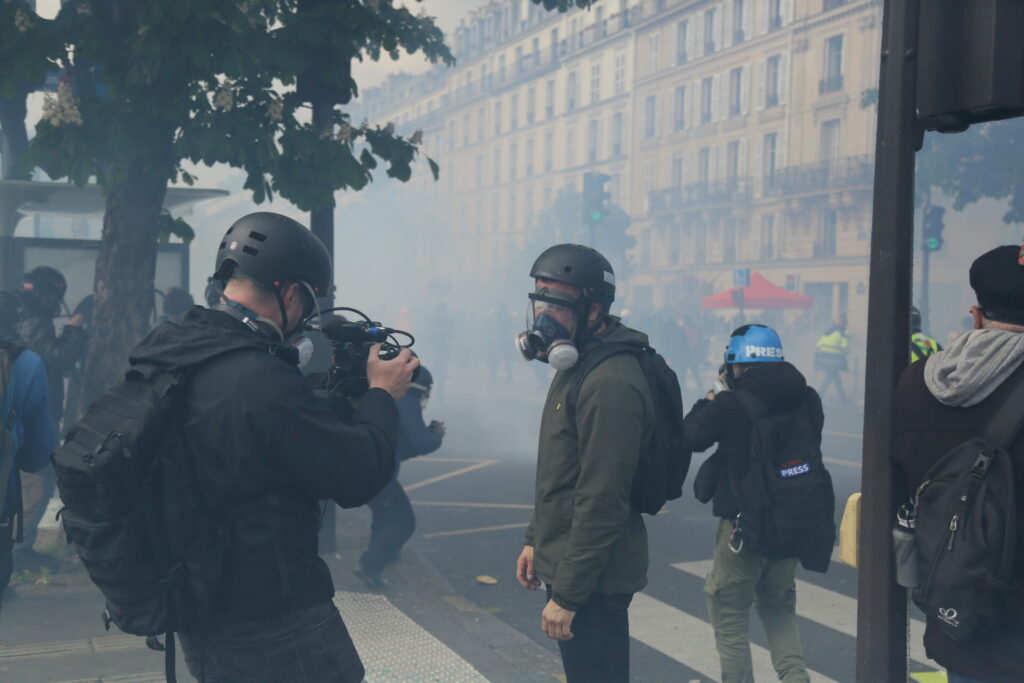
I met Hanrahan for the first time at King’s College, London, where he had been invited to give a lecture. Typically, journalism lectures are dry and under-attended. Hanrahan’s was so rammed, I had to sit on the floor. I also felt distinctly older than everyone else although I’m only 27.
“This is what I tell people”, Hanrahan said, typically bellicose, addressing a question about how online politics affects the frontlines, “everyone crying on the internet… no one on the ground cares about that. You think people who are getting shelled care about the ideologies of the guy saving them? No one who is fighting cares what you think. Nor should they.”
Hanrahan is hard to pin down politically. He’s 33, proud of his Irish roots, avowedly anti-authoritarian and has a tattoo of the Levellers (the 17th-century radicals, not the post-punk group) on his right calf. He’s closely enmeshed with European anti-fascism but distrusts high-minded theory and millennial left-wing media, because he says it alienates the kind of people he grew up with. Hanrahan hails from Kettering, a working-class area of the East Midlands known for its cobblers. He wants his journalism to be accessible to his friends back home.
A good example of Hanrahan’s affection for political outliers is Popular Front’s profile of JStark1809, the nefarious founder of a 3D-printed weapons network. Popular Front went to Germany to visit JStark in 2020, producing the documentary Plastic Defence, which has now been viewed almost three million times. Multiple investigations into 3D-printed guns have since been published by major newspapers.
“I was talking to him for about three years,” Hanrahan said, describing how JStark kept stalling the film, desperate to perfect his homemade FGC-9, a 3D-printable, semi-automatic pistol calibre carbine. FGC, Hanrahan explained, stands for Fuck Gun Control. The following year, German police raided the Völklingen home of JStark, who turned out to be a 28-year-old man, originally from Hannover.
Just a couple of days after the raid, JStark was found dead (reportedly due to natural causes) in a car in front of his parents’ Hannover home. His legacy, however, continues in the form of his beloved FGC-9, which has been spotted in the hands of rebel forces in Myanmar. Irish dissident republicans have also been seen with an FGC-9 variant. Following his death, Popular Front’s ‘about us’ page was updated to include a memorial for him.
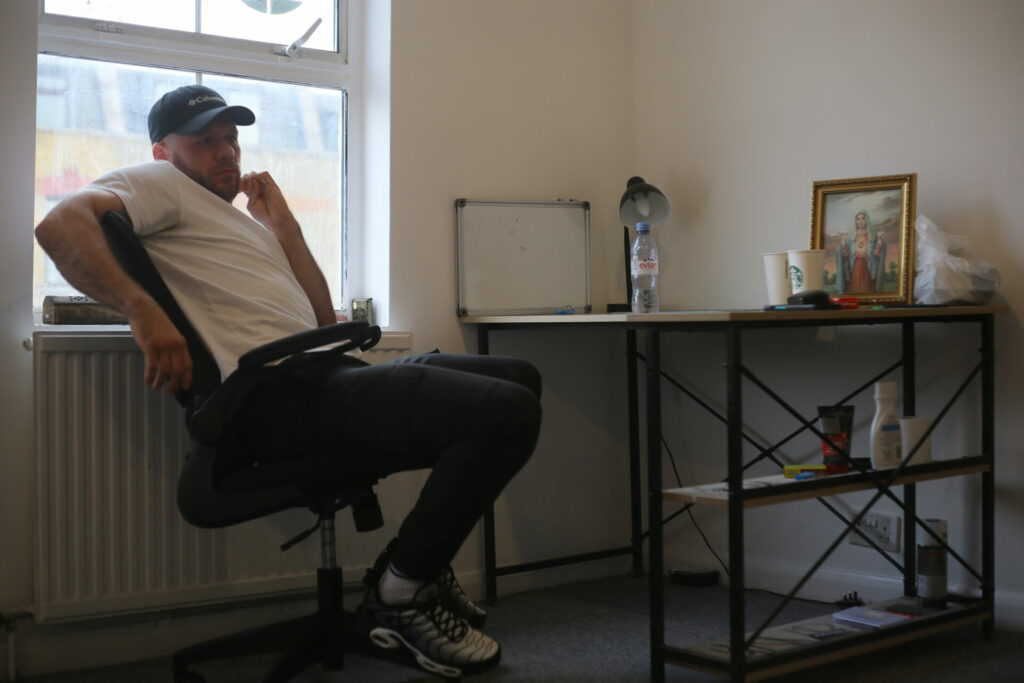
“The people who make 3D printed guns opened Pandora’s box. But you said, ‘Hey everyone, Pandora’s box is open!’” says a young student challenging Hanrahan during the talk. “You guys did more for 3D printing with insurgencies than anyone else and it’s still early days… When something terrible happens, are you going to feel a bit responsible?”
“We’re journalists, not police,” Hanrahan responded. “We didn’t show anyone how to make the gun. We didn’t show anyone where to get the gun… It’s like saying: ‘Don’t report on ISIS, because people might join them.’”
Other than his commitment to combat sports (Hanrahan is built like a bull mastiff and attends his local gym with the steadfast dedication of an orthodox priest practising mysteria), the most impressive thing about Popular Front’s founder is his industriousness. It’s genuinely arresting how many plates he’s able to juggle. When he’s not playing World of Warcraft as his level 58 dwarf Nestor, he edits all of Popular Front’s films, administers a seemingly autonomous Discord server, sub-edits every article, plans every trip, and scripts and presents every podcast. He finances everything too through funding from Popular Front’s 2,500 Patreon subscribers and various merch endeavours. He is the closest thing Popular Front has to a full-time employee.
Not a fan of normal jobs, Hanrahan once told me about a spell working for TK Maxx in his early twenties. “I would detest every millisecond. I would want to fucking die,” he said. To stave off ‘the dread’, he took to stuffing Fight Club-esque threatening letters into expensive Kurt Geiger shoes before stacking them.
Still living in Northampton, his break came when he travelled down to London for a meeting at alternative current affairs channel VICE. His grandmother had to lend him the money for the fare, and to his dismay, he arrived to find the manager had forgotten about their appointment. Nevertheless, Hanrahan stuck around in the foyer until he returned at the end of the day. “They asked me what my day rate was. I said £100.” One month later, Hanrahan was presenting his own documentary in Sweden.
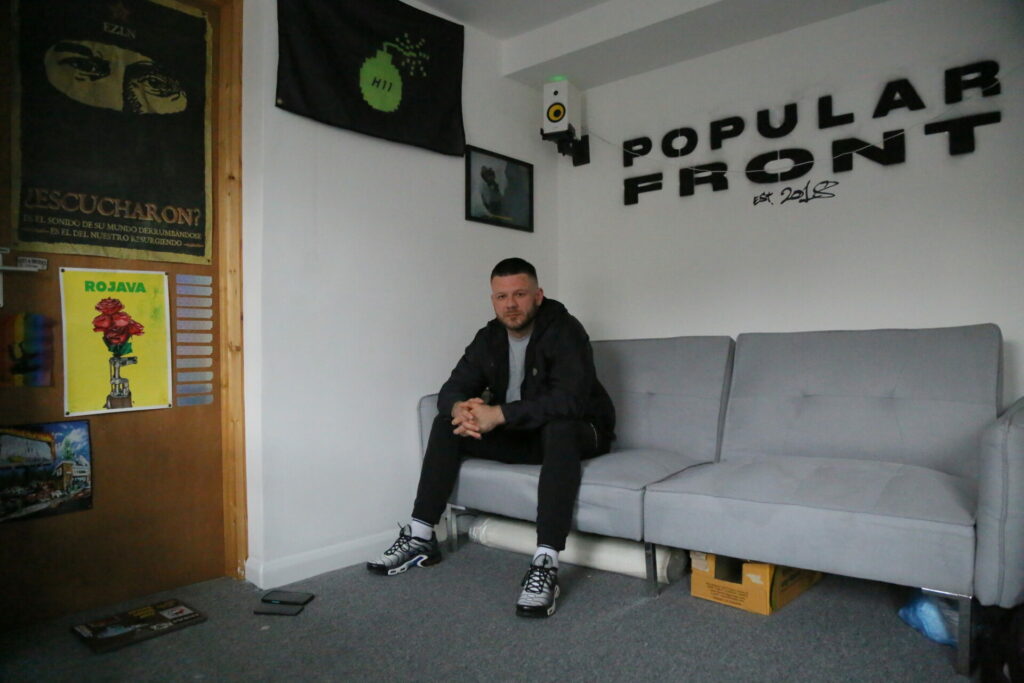
In the years that followed, VICE News changed Hanrahan’s life. The channel sent him to report on the war in Syria just a few months after he quit his job on a building site. During one excursion into the Kurdish autonomous region of Rojava, he was arrested by Turkish forces and locked up in a prison. He was released just before the Chechen ISIS conscripts in the next cell could stab him to death.
But over the years, Hanrahan became disillusioned at VICE UK. After leaving the company, he began Popular Front, initially as a podcast.
Hanrahan attributes Popular Front’s overall vibe to the old BBC travelogue Whicker’s World, Death Grips, and CKY2K (a progenitor of Jackass). “Young people are tired of being told when to be angry,” says Hanrahan. “If you just present something as it is, the young generation don’t feel like you’re talking down to them. The media want to be seen as this wise man, this moral arbiter. I really don’t think that’s what reporting is there for. Reporting is there to tell you what’s happening.”
Which brings us back to 1 May and Paris.
It’s a sunny afternoon and the city of love is white with tear gas, which, for the uninitiated, feels a bit like attempting a Vicks-style inhalation over a bowl of Szechuan pepper and molten plastic. Protesters clash with police. Shop windows are ruptured and broken open. Rented electric bikes are set on fire in the road. Sound grenades echo like thunder-claps.
When I finally catch up with Hanrahan, he’s busily looking for interviewees in the chaos. There are journalists everywhere, but Hanrahan is set apart as the only one with his outlet crudely scrawled on his helmet. Out of nowhere, he’s hit with a rubber bullet, and beneath his jacket, a bruise grows in two concentric red circles. He’s in good spirits. He and his long-time Popular Front colleague Luke Pierce make sure I’m keeping up, and that the masks and goggles they recommended for me and my photographer are holding up under the strain.
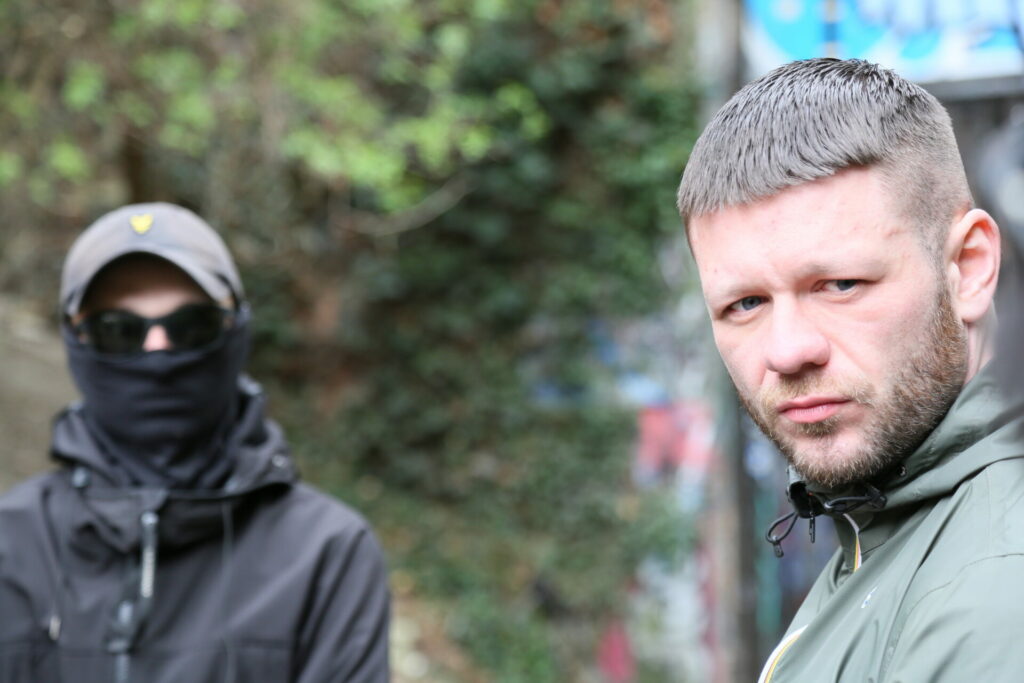
“It’s a very unusual situation,” Hanrahan shouts to me, muffled behind his gas mask, pointing to interrupted moments of everyday life. “There’s a pharmacy, a café, and there’s booted-up policemen fighting with teenagers”.
I ask him how this protest compares to others he’s been to. “On a scale of one to 10”, he says, “with 10 being the most gnarly — probably a seven.” Then, one of the police’s crowd-control grenades goes off next to us, slamming into my hand. “Nah, actually,” he says, “maybe, like, a six.”
Suddenly, the gas returns, drowning the air. Pierce grabs hold of Hanrahan, who grabs hold of me, and we make our way through the smoke in a human chain. It’s all strangely tender.
I ask Hanrahan if he’d miss this sort of thing if he could never go back. “I don’t think so,” he says. “I don’t yearn for it… but once I’m in there, I’m like, ‘Oh yeah, this is what we do’… I feel like this is my place. I’m good at this, I know what I’m doing.”
Eventually, everything starts to feel normal, almost like a game. The ebb and flow of police charges and retreats becomes like a grownup version of British Bulldog or Forty Forty. Then, on the other side of Place de la Nation, an entire building bursts into flames and a column of brown smoke rises over Paris. Suddenly, it doesn’t feel like a game anymore.
Having lost and found one another a dozen times, Hanrahan, Pierce, the photographer, and I collapse on a bench outside a café. We’re drinking Coca-Cola while a wall of police attempt to divert traffic. We’re joined by CocoBongo666, a Popular Front photographer. CocoBongo was in Bakhmut, Ukraine, until the last possible moment, but even he looks tired. Soon, Hanrahan, Pierce and CocoBongo are cheerfully recounting past clashes and discussing whether to go for a drink.
Though the finished product reporting the day’s events will no doubt retain the racy Popular Front aesthetic, Hanrahan’s approach doesn’t seem particularly different from that of the other journalists here: he carefully selects his subjects and is always anxious not to miss crucial developments. The main departure is who’s willing to talk to Popular Front, which enjoys unhindered access to the black-bloc anarchists at the sharp end of the fray.
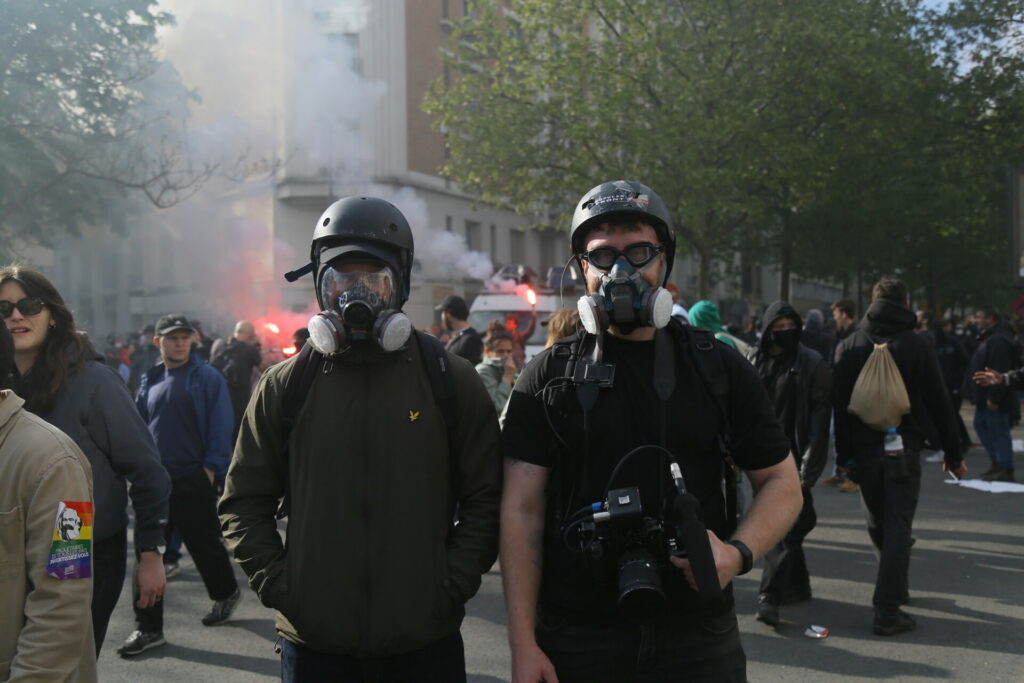
Over the couple of months that I’ve got to know Hanrahan and his colleagues, I’ve become torn between two competing visions of the conflict journalist — neither of which is necessarily specific to Popular Front. The first is of someone willing to take risks for the good of their work, who wants to speak plainly and honestly about the world at its worst. The other hinges on addiction and a perverse need to be close to danger while remaining just far enough removed so that it can never quite follow you home. Given that Popular Front is a media organisation with very little oversight, which is operating without set regulations, this second vision seems like a more pertinent critique, though I decide not to put it to Hanrahan in Paris. Instead, a few weeks later, in Popular Front’s office — a room Hanrahan rents above a dry-cleaner’s in east London — we sit down for a chat.
“You want anything to drink?” he asks, rooting around in a mini fridge. “We’ve got Pepsi Max, and… err… Pepsi Max.”
We decide on Pepsi Max. I’ve been nervous to challenge Hanrahan; he can be quite defensive sometimes, but today he seems more relaxed, and since Paris it feels as if there’s a newfound trust between us.
First, I ask him why he’s always in front of the camera — could it be said that his personality obscures the news itself? “There’s got to be some level of para-social relationship there…” he replies. “It’s like when I got shot with the rubber bullet in Paris. The next day, I was on Twitter and posted about the wound. It was like PR… I thought, people are going to watch the documentary more now. They’ll say ‘That’s the guy that got shot’… So, in a way, it’s kinda crass, but there’s a part of it that’s cynical.”
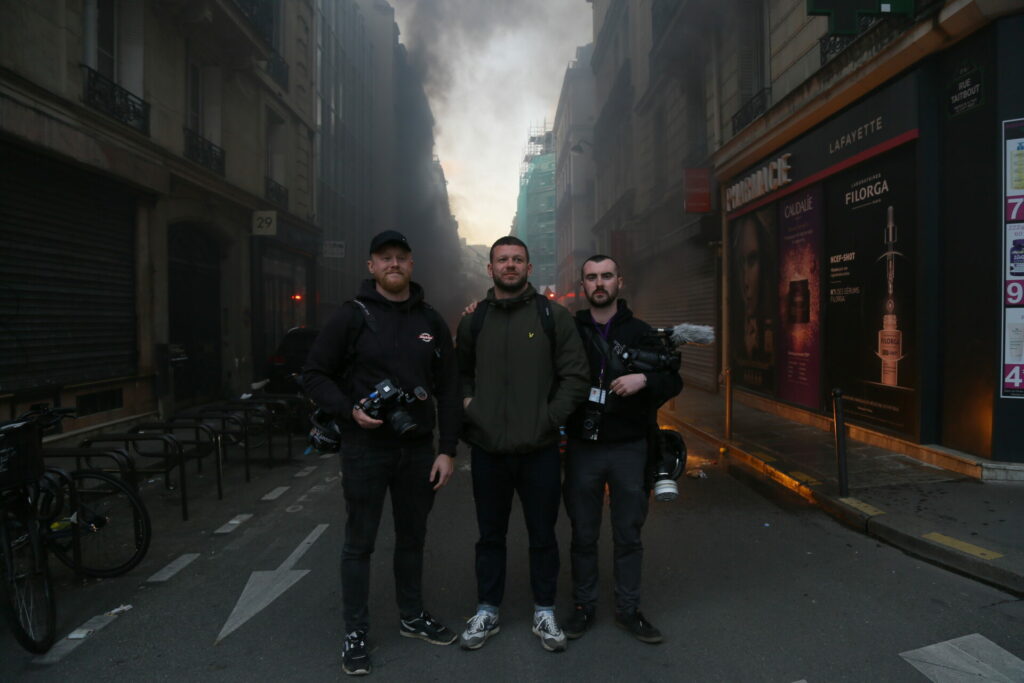
I’m surprised to hear him speak so candidly about the trade-off between sustaining an injury and cultivating viral kudos. “I think you’d be a fool not to do that,” he says. “You’re an independent. You’re running uphill already.”
With online status comes online detractors. Hanrahan has had very credible death threats from neo-Nazis, but what seems to affect him more are the chiding accusations online — mostly that he’s a ‘tourist’ or something called a ‘conflict bro’, which I’d never heard of. One rogue Reddit thread called him out as the ‘Joe Rogan of conflict journalism’, referring to the American podcasting megastar, whose name is regularly used as shorthand for a hypermasculine person who doesn’t know what they’re talking about. Another Twitter account labelled him a de facto ‘parasite’ for Popular Front’s assumed exploitation of fixers. Though that same account subsequently apologised publicly.
“I think the idea is that we’re not as intellectually sound,” says Hanrahan. “We’re a bit boisterous and a bit louty — which I am — and purposefully in your face. So that made me ‘a bro’. But to be honest, I think it’s kind of a classist thing, the idea of ‘the bro’ as this uneducated guy. I wear Nike-TNs, so I’m a ‘conflict bro’ — how about I’m a fucking war reporter and I’m doing good work?”
Class wasn’t something Hanrahan used to think about until he moved to London and started working at VICE. Another journalist called him ‘Danny Dyer’ and it got to him. “After that, I was really trying to talk posh on camera,” he says of the incident. Pretty soon, he decided to drop the act. “I just thought, ‘Fuck this, I’m not doing this anymore. I’m gonna be myself’ and that’s when a lot more people got into my work.”
One of the defining factors of Popular Front is its singular dedication to covering conflict and violence. Hanrahan has always harboured a fascination with violence but, according to him, so has society.
“Everyone is slyly obsessed with violence… I don’t see any difference between a football hooligan and a wine mum getting her rocks off watching true crime… It’s that stepping over the line. That’s why I cover crime and conflict. I’m interested in people who step over the line. Violence is part of that. You can chat shit to someone, but when they punch you in your face everything changes.”
There is, of course, a difference between covering conflict and revelling in it, and perhaps the divide is more porous than we’d like to admit. In covering conflict with the aesthetic bombast of a Death Grips video, has Popular Front slipped towards mindless fetishism? When does the fascination with violence and conflict become perverse? “It’s kind of always perverse to a degree,” Hanrahan concurs. “There’s a reason people stop their car when someone gets mown down. It’s because they’re fascinated.”
“But Popular Front aren’t doing that, are they?” I question, “You’re not just gawping at violence?” We’ve been here for almost two hours now. The sun has set over the high street outside.
“No,” Hanrahan replies. “But we’re definitely using part of that fascination to present it… I utilise it to get the point across… But I would also say we’re delivering a realistic perspective. The level of violence at the clash we were at in Paris was insane. Why wouldn’t we show how bad it was?”
As we part ways, I reflect on the ‘conflict bro’ label Hanrahan has since adopted. Popular Front is purposely provocative, but it’s also approachable and anti-elitist. People respond to what Hanrahan does. I saw it myself in Paris when onlookers would see him coming and shout “Front Populaire! Welcome to France!” According to Hanrahan, Popular Front has now become a touchstone in some war studies syllabuses. But equally, it’s also regularly watched by his Thai-boxing friends back in Northampton. He’s proud of this duality.
Back at home, beside my bed, is a little tear gas cylinder I brought back from Paris as a souvenir. “If riots were boring and shit, people wouldn’t do them,” Hanrahan had told me. He’s right, I suppose. And if Popular Front was boring and shit, no one would watch it.
Taken from the next issue of Rolling Stone UK. Pre-order it here.
